This is what I learned in a Red Cross CPR class
The American Red Cross offers a number of courses to help members of the general public save lives
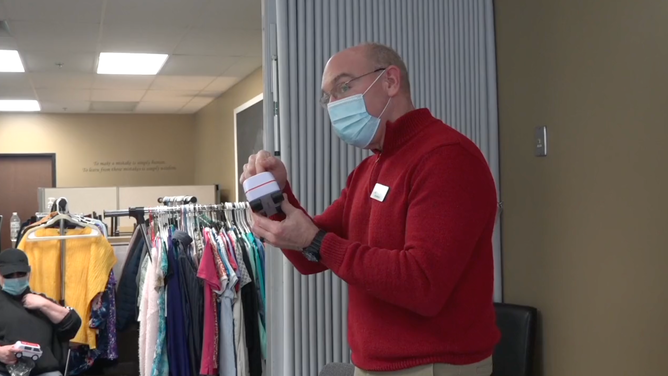
An instructor teaches a CPR class about cardiac compressions.
(American Red Cross)
Imagine it: You’re out with family and friends. Then, before you know it, one of them collapses.
They’re laying on the ground. They’re not breathing, and they’re completely unresponsive.
What do you do?
Most people might not know how to handle that situation, but the American Red Cross wants to change that by offering a series of courses that teach members of the general public how to save lives.
I had the opportunity to take one of these courses and learn CPR and first aid skills that could potentially help a loved one — or anyone — in need.
High stakes
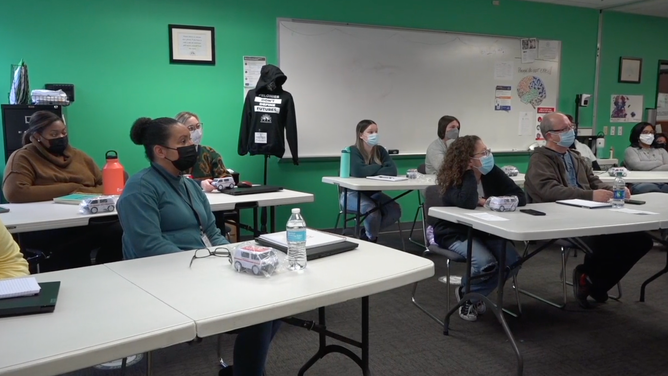
Students at a Red Cross training class.
(American Red Cross)
"It's incredibly important for folks to be trained to respond to an emergency whenever and wherever it may happen," said Stephanie Fox, national spokesperson for the American Red Cross.
"You never know when you're going to come across somebody who may be suffering from an injury or suffering from cardiac arrest."
According to Fox, around 300,000 people pass away from cardiac arrest every year, so the chances of coming across someone suffering from cardiac arrest are quite high. Also, for each minute that cardiac assistance is delayed, a person’s chance for survival is reduced by about 10 percent.
Learning CPR, or Cardiopulmonary Resuscitation, can make all the difference.
The classes
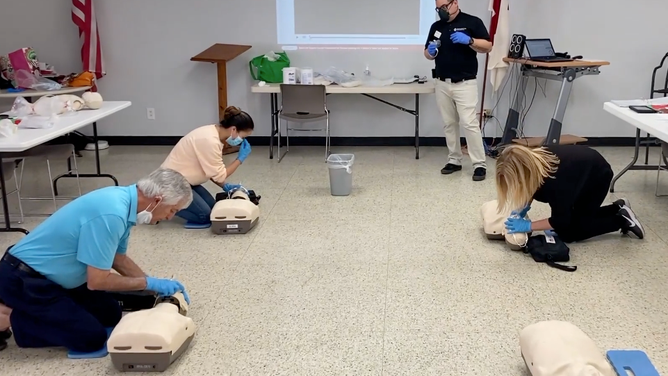
Trainees practice CPR on mannequins.
(American Red Cross)
CPR is one of many courses offered by the Red Cross. Some of the other courses include First Aid and Automated External Defibrillator (AED) training.
The class I took folded all three courses into one.
According to Fox, the CPR, First Aid and AED courses are taught in a couple ways.
"We have an all instructor-led in-person class or we have what is called a blended model, where folks can actually take some of their class online and then they'll go in for the more hands-on side of things to ensure that what they've learned online they're actually able to do in real-time through that instructor-led component," Fox said.
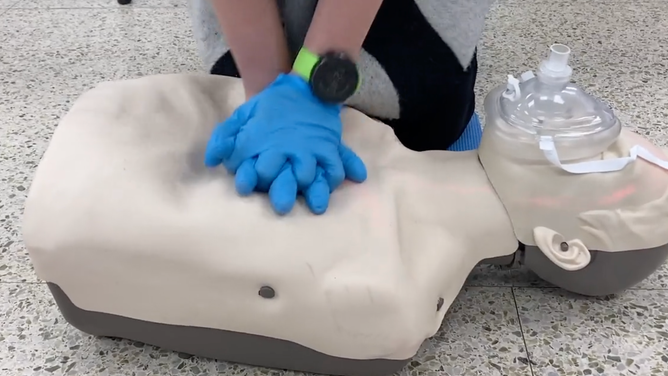
A student practices chest compressions on a mannequin. Note the red lights appearing on the mannequin's head and neck to denote the proper chest compressions.
(American Red Cross)
I opted for the blended model.
The online component was taken at my convenience, as long as was completed prior to the in-person component of the course. It lasted about two hours and included a series of modules with training videos, films recreating emergency scenarios, photos, interactive learning components and quizzes.
The in-person component also lasted about two hours and took place at a nearby Red Cross center. The class included seven trainees, including myself, and one instructor. She coached us through the skills we learned online about CPR, First Aid and AED training, and gave us opportunities to practice those skills on mannequins.
Upon completing both the in-person and online components of the course, I received an official Red Cross certificate and wallet card, confirming that my CPR, First Aid and AED training was complete and valid for two years.
My review of the class
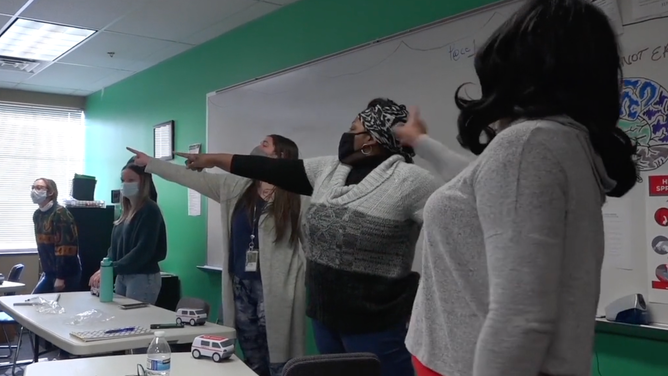
Students practice telling instructions that can help save a life to a bystander.
(American Red Cross)
I found the CPR, First Aid and AED course to be quite thorough, which was understandable given the high stakes involved learning life-saving and life-sustaining skills.
The online component was far more modern and polished than traditional online trainings. For example, the training videos that recreated emergency situations were well produced and effectively illustrated the correct emergency responses. This care and attention placed on the production made the media more engaging, which was helpful given the length of the online component of the course.
Another feature that kept me engaged was the multi-pronged approach of the online component. In addition to having trainees watch videos, it also provided interactive segments. Some were akin to games, such as dragging and dropping AED pads onto an outline of a person, while others were more quiz-like in testing my knowledge. These activities not only helped me stay focused on the lessons, but also helped reinforce what I learned.
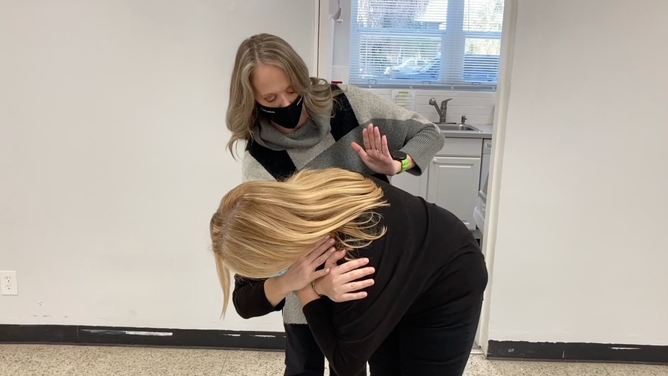
As part of the first aid component of the class, students practice "back blows" to save a person from choking.
(American Red Cross)
The in-person component of the blended course tested and helped cement those lessons learned. Having the instructor walk my class through emergency situations and allow us to practice critical steps was so helpful. Repeating those steps through various situations — such from someone experiencing cardiac arrest to someone who is choking or having a stroke — made retaining the information much easier.
We also had the opportunity to practice our skills on mannequins. For example, when we would practice CPR on the adult mannequins, the mannequins would light up to show whether the cardiac compression rate we provided were correct, and their chests would rise to show whether we were providing enough oxygen. The baby mannequins allowed us to practice the same skills, but with critical adjustments for their particular size and needs.
Save a life
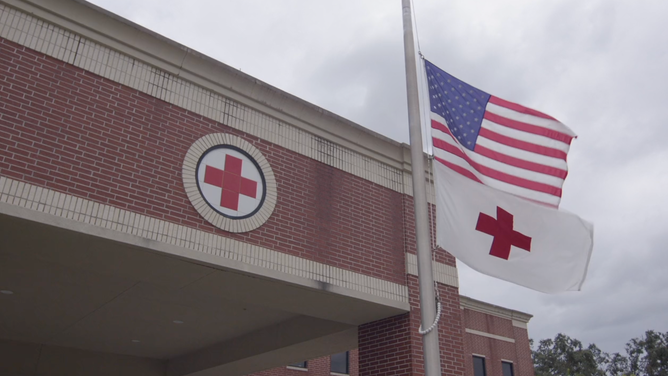
The American and Red Cross flags fly at an American Red Cross center.
(American Red Cross)
"I think it's really important for folks to know how to respond in an emergency because you never know when one may occur," Fox said.
"Whether you are out shopping and somebody goes into cardiac arrest or somebody in your family suffers from a medical emergency, you want to know who those tactics to be able to help them in the quickest fashion and to take care of them until emergency personnel can arrive."
"Whether that's the cardiac compression component or the full-blown CPR, we want you to be able to help sustain and save a life."
You can sign up for a class with the Red Cross by going to this site here.